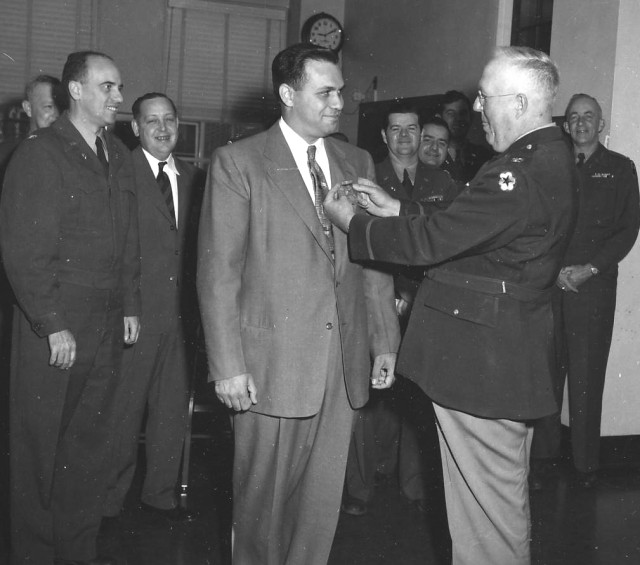PICAINNY ARSENAL, N.J. - Last year saw the loss of a major figure in Picatinny history. Robert M. Schwartz, the man who moved the arsenal into the Atomic Age, died Oct. 21 at the age of 88.
In 1949 the Pentagon completed studies which indicated the feasibility of an atomic artillery shell and needed someone to design the actual item. It wanted "an Ordnance engineer with an exceptional combination of imagination, courage, and boldness," and Picatinny responded with Schwartz, a City College of New York graduate and former Navy radar project officer who came to the arsenal at end of World War II.
The young engineer had one problem with the assignment. It required him to temporarily relocate to Washington, D.C., and he was taking a course at Newark College of Engineering. So, the Army allowed him to spend his Mondays at home with the rest of the week in a locked room at the Pentagon.
His basic challenge was to increase the size of the Army's largest field artillery shell from 240 mm to 280 mm and toughen it to withstand firing at 6,000 revolutions per minute. This meant the shell had to be 4,000 times as strong as the casing for an atom bomb. Schwartz completed his preliminary sketch in 15 days and then returned to Picatinny and another locked room to refine it.
His next job, once the Ordnance Department actually approved development, was to put together a staff - a difficult task given no one at Picatinny had worked on anything similar.
Somehow, Schwartz and his team managed and the Atomic Annie cannon fired the first nuclear shell at Frenchman Flat in Nevada May 25, 1953.
While the Atomic Annie system never saw actual combat use, Gen. J. Lawton Collins, chief of staff of the Army during the Korean War, thought its existence played a role in deterring Soviet aggression during the early Cold War years and specifically praised the Picatinny team that created the shell.
The experience at team-building probably contributed as much as the design achievement to making Schwartz the first head on Picatinny's new Atomic Applications Laboratory.
He stayed at Picatinny until 1975, when he went to work for Day & Zimmerman in Philadelphia. Also, he became a member of the Ordnance Hall of Fame in 1991.


Social Sharing